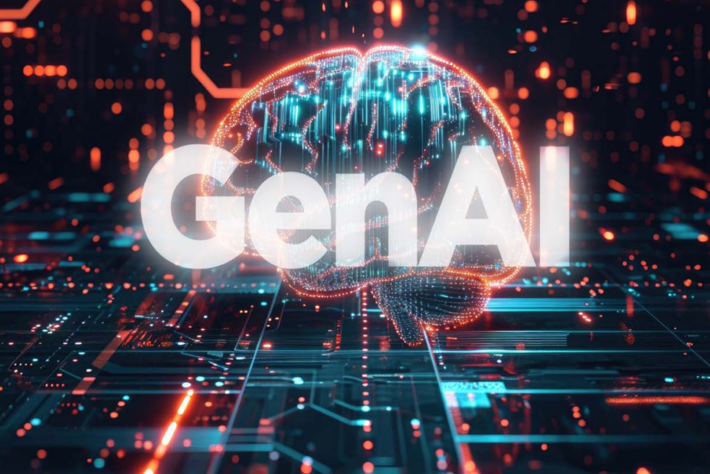GenAI is the new groundbreaking technology. It’s exciting because unlike traditional AI whose models constantly need to be built from scratch per use case, GenAI has the potential to democratise access to AI for telco employees and customers thanks to foundational large language models (LLMs). With the use of just a prompt, formulated as a well-worded question, communications service providers (CSPs) can apply GenAI to a broader range of use cases and business workflows
Amdocs wanted to understand from its customers how they see themselves benefitting from GenAI, especially given the fact that this technology involves so many risks and considerations, such as privacy, governance, latency, security, costs and more.
So, in partnership with management consulting firm Analysys Mason, Amdocs undertook a far-reaching survey, both quantitative – using closed questions to survey over 100 Telco leaders responsible for their organisations’ deployment of GenAI solutions in the next 12 months – and qualitative via ten in-depth interviews with CSP c-level managers around the world.
It became clear that most CSPs have already started their GenAI journeys. “Our survey found that 22% had already deployed a GenAI solution, with a further 32% in the proof of concept or trial stage for GenAI solutions,” says Ofir Daniel, head of Platforms Marketing at Amdocs. 75% of CSPs expect GenAI deployment to expand the range of automated operational workflows for both customers and employees.
Adopting GenAI
Adopting GenAI has both inbound and outbound impacts for CSPs.
Internally, the adoption of GenAI helps the CSP increase productivity. For example, using LLM to analyse customer complaints and repeated interactions to generate a personalised treatment plan, while taking severity, churn risk and customer lifetime value into consideration. In another example, If the CSP marketer needs to come up with a new offer for their customers, using a GenAI-powered catalogue they can generate an ‘ideal’ product with the appropriate pricing and thus speed up its time to market and its propensity to sell.
When looking at outbound adoption, GenAI helps the agents provide a far better experience for their end customers, both consumer and business, by overcoming their pain points. An Amdocs survey found that the most common issues that customers face are bill, offer and contract related (about 75%), where making changes to existing plans or subscriptions, assistance with bill or payments or technical support are more prevalent. GenAI can help solve these pain points. In one example, when a customer calls to ask why their bill is more expensive this month, the agent can use a GenAI Bill Inquirer to provide the customer with extremely accurate answers for an optimised experience.
Key considerations for successful GenAI adoption
There are different aspects to the effective implementation of GenAI at a CSP. This is where you need to ensure the GenAI technology is verticalised specifically for CSPs, using a Telco Taxonomy and Semantics that is appropriate for the industry.
Cost: Using GenAI requires heavy resources, which are measured mainly in tokens. Tokens are both the input and the output of every LLM interaction, including user input, system prompts, any CSP-based enrichment, and chat history. The total number of tokens impacts the cost of the call, because you pay per token sent and generated. A non-CSP native GenAI implementation will result in inaccurate, dull prompts (which will increase the total cost of queries and therefore its associated costs).
Agility: For CSPs to successfully inject GenAI into their processes and maximise its value, they must set up an agile use case development strategy where they work on one area from where they can be flexible to later implement into other areas, for example, marketing, care, sales, B2B. “As telcos establish early wins with GenAI”, adds Daniel, “they should also set up a platform to address pressing technology, processes and skills-related issues, avoiding the creation of organisation silos. Instead, they should develop a central solution or GenAI Centre of Excellence (CoE) to coordinate development activities across business domains.”
Integration: GenAI integration with internal workflows and systems is crucial if CSPs want to benefit from the more transformational impact of GenAI. Daniel notes, “46% of our survey respondents ranked this as the most important capability for a successful GenAI implementation, and 81% of telcos view GenAI integration with operational workflows as their topmost challenge, with establishing interoperability with BSS/OSS systems being the key driver.” For example, in network planning, use GenAI to enable natural language to query combined data from infrastructure planning and customer operations teams to determine locations with coverage and capacity issues.

Feedback from the CSPs revealed that they believe that for GenAI to be effective, it must be integrated with other tools or APIs into other platforms. CSPs handle major amounts of paperwork, for example in processing new orders or proposing a complex solution for enterprises via their configure, price, quote (CPQ) software. GenAI can inject a high level of intelligence and automation into these workflows that process thousands of parameters flowing between systems.
Data architecture: “Almost all telcos we surveyed said that it is likely that GenAI demand will drive investments in data architectures,” says Daniel. GenAI systems have unique data demands and to drive quick returns on GenAI investments, and CSPs’ data architectures must fulfil these demands. “But first,” notes Daniel, “unlike what we see now, data needs to be easily accessible, well understood, clean, accurate and stored in large volumes within scalable data environments to effectively deliver GenAI projects. If not, telcos risk delivering GenAI solutions that provide low quality outputs and will result in slow adoption.” For effective GenAI implementation, CSPs must reassess their existing data architectures and upgrade them to scale GenAI developments.
How to implement GenAI in your organisation
There are three main ways to successfully implement GenAI in a CSP: use-case driven, platform-driven or embedded.
By addressing specific use cases CSPs can focus on one issue out of the dozens they’re faced with daily, using GenAI to deal with this one specific domain. One example is dealing exclusively with customers who are travelling abroad and are looking for the best roaming package. The CSP can take a deep dive into this question, achieve proven ROI, and then slowly, expand to other areas of activity. This approach places a focus on driving quick wins with early use cases that align with immediate priorities.
With the platform-driven approach CSPs can use a centralised GenAI solution to manage a business workflow within their organisation using five or six different modules. For example, conversational selling, which involves various modules, including chat bots, catalogues, ordering, CRM and more. A GenAI platform pre-integrated with these various systems, which understands a telco’s semantics, can solve such a use case by engineering and optimising prompts to the LLM.
As an embedded part of a product or solution GenAI can also be implemented at the CSP, for example, embedding GenAI capability in the billing system or in the catalogue of a vendor provides these capabilities within the product scope and functionality.
Deploy GenAI capabilities with Amdocs amAIz
amAIz is a purpose-built GenAI TelcoGPT, offering a rapid, secure and cost-effective approach to CSPs’ GenAI journeys. It features an expanding library of pre-built use cases designed to overcome specific business challenges. A key example is Bill Inquirer, which efficiently resolves customer billing issues using GenAI by being able to understand, analyse and compare bills to provide insights in natural language for the end customers or care agents.
With Amdocs Copilot, amAIz seamlessly integrates GenAI capabilities throughout Amdocs’ portfolio. For example, CPQ Copilot automatically generates B2B proposals and optimises pricing to improve deal closure rates and profitability.
To maximise the potential of amAIz, Amdocs forged strategic partnerships with GenAI industry leaders like NVIDIA, Microsoft and AWS. At the same time, it maintains an open architecture, ensuring compatibility with diverse GenAI foundation models.
Comment on this article below or via X: @VanillaPlus






